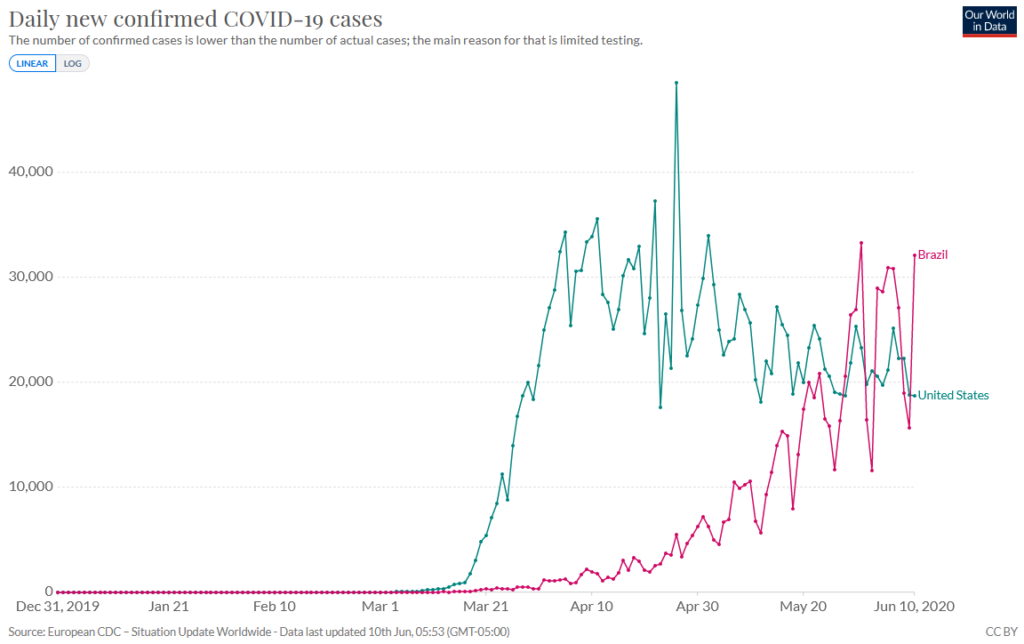The changing dynamics of the Coronavirus Disease 2019 (COVID-19) pandemic, relatively rapid, moved its epicenter from Asia to Europe, later to North America, and now, into Latin America. This is currently the region with the highest number of new daily cases.
In late February 2020, a group of experts in infectious diseases from Brazil, Colombia, Peru, Argentina, Bolivia, Chile, Honduras, Mexico, Panama, Uruguay, and Venezuela, addressed in an Editorial at Travel Medicine and Infectious Diseases, the implications of the arrival of the first imported case to region, in São Paulo, Brazil.
Latin America is a vast region, with over 642 million people living in 20 countries, from Mexico, in the north, to Argentina in the south cone. This geographical area has a significant social inequality and resource-limited healthcare systems. Before the COVID-19 pandemic, this region faced recent devastating epidemics such as those from chikungunya and Zika, even with long-term consequences (e.g. chronic chikungunya and Zika-associated neurodevelopment impairments), from 2014 to 2016, and dengue on multiple occasions over the last decades, especially in the urban slums. Additionally, with a marked impact of forced migration derived from the humanitarian crisis in Venezuela, leading to the spillover and outbreaks in other countries of the region due to vaccine-preventable diseases, such as measles and diphtheria, as well as from other vector-borne and zoonotic diseases, such as malaria. In this neotropical scenario, that includes the Amazon jungle, shared by nine countries of South America, other regional endemic and emerging infectious diseases such as Chagas disease and viral hemorrhagic fevers, such as yellow fever, Orthohantavirus or Chapare virus, also have significant disease burden and impact.


